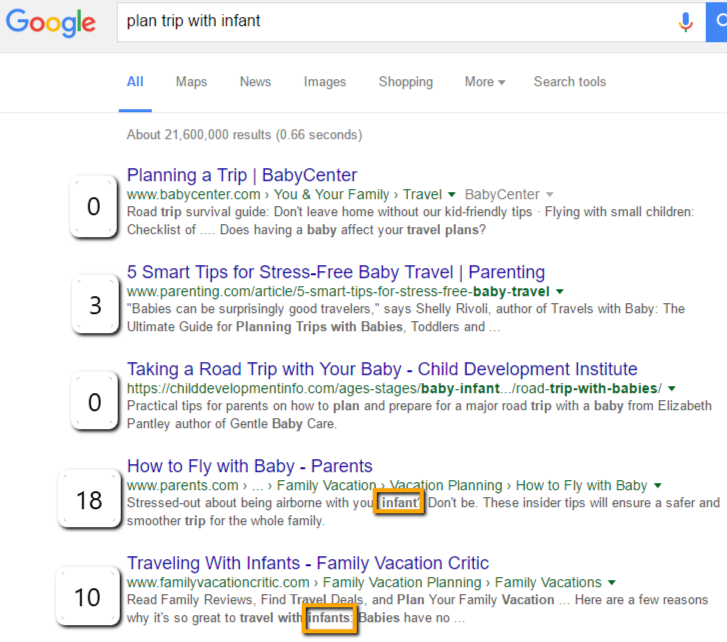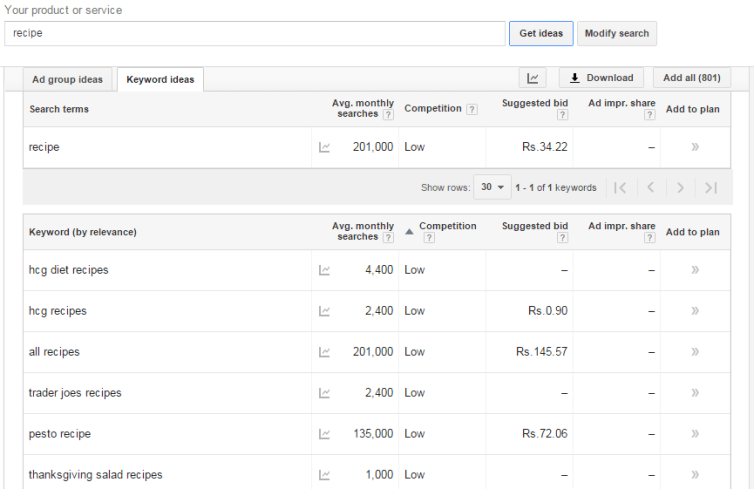Search engine optimization or SEO has changed significantly over the last few years. Earlier, optimizing a website for the search engines often meant stuffing keywords on a web page and generating as many backlinks as possible. SEO professionals were treating search engines as a tool that they could game. The focus, unfortunately, was not on providing useful, high-quality information to readers.
However, as search engines and their algorithms evolved, this phenomenon has also changed.
Stuffing keywords and acquiring backlinks are no longer enough. You also need to be tactical and have a strategy. The primary purpose of that strategy should be to help readers find solutions to their problems. And one of the core focuses of modern-day SEO professionals — by which they can help their readers — is understanding user intent.
To put it briefly, user intent isn’t about stuffing certain keywords and keyword phrases in a piece of content. It is about understanding the context of a topic or the overall problem and then using words that the readers might relate to — even if they do not use those specific words in their search query.
That is where semantic search comes in.
What is semantic search?
One of the big goals of Google — and other search engines — is to push search queries into the realm of natural conversation.
The rise of voice search and smart mobile assistants has also contributed to this. Nowadays, online users just talk to their mobile phones or voice assistants if they want to search for something on the web. Because of the conversational nature of that search query, the keywords are usually different than what they would have been if the user typed them out in a search bar.
“Semantic search” refers to the relation of words and their logic. It focuses on understanding the underlying meaning of a searcher’s query and her intent through contextual meaning.
In other words, Google does not need specific keywords to surface relevant results. Through semantic search and understanding user intent, it has the ability to understand a user’s query — even if it does not use those keyword phrases — and present relevant answers in the search engine results pages (SERPs).
Here is an example.
In the above image, the search query is “plan trip with infant.”
As you can guess, the user’s intent is to find tips on planning a trip with an infant. However, the first result in Google’s search engine results page does not even use the word “infant.”
On the other hand, articles ranked on #4 and #5 use that keyword 18 and 10 times respectively.
This shows the power of semantic search and why it’s more important to focus on user intent and LSI keywords instead of specific keyword phrases that people are using in the search engines.
How to optimize your website for semantic search
Now that you understand the important role of semantic search, here are a few tips to help you optimize your website.
1. Create long-form content that gives you more room for context and keywords
Long-form content empowers content marketers and SEO professionals with more real estate and, therefore, extra opportunities to include semantically related keywords.
If you want to optimize your website for semantic search, it’s a better idea to stick with long-form content, i.e., blog posts with over 1,000 words.
There are plenty of advantages in sticking with this strategy. Here are a few:
- Long-form content will allow you to dive deep into a topic and explain it in detail. This vertical expansion will enable you to include more relevant keywords that search engines can optimize your web page for.
- Long-form content has a better chance to rank higher in the SERPs.
- A 300-word blog post isn’t very suitable for addressing user intent. A long-form blog post gives you more opportunities to do so.
2. Focus on user intent
As we discussed earlier, user intent is one of the most important aspects of modern-day SEO. Instead of focusing on specific keywords and keyword phrases, you need to address the underlying problem that your readers might be facing and give them actionable tips and practical solutions.
If your content focuses on user intent and actually helps solve a problem, it will find its way to the top of the SERP even if it does not have the right keywords. This is proven by the “infant” example we saw earlier.
3. Use LSI keywords
LSI stands for Latent Semantic Indexing. LSI keywords refer to keywords that are semantically related to the primary keyword of your web page.
LSI keywords play two important roles when it comes to optimizing a web page for search engines:
- You cannot use your primary keyword too many times because it will lead to over-optimization of keywords or, as we usually know it as, keyword stuffing. LSI keywords replace your primary keyword in the content and help you avoid Google penalties.
- Second, LSI keywords add more context to your content. It helps search engines understand what the topic is and for whom it is intended. Once that understanding is developed, Google is in a much better position to present it to the intended target audience, even if they don’t use a specific set of keywords in their search query.
Here is an example.
Suppose you are writing a blog post, and you are trying to optimize that page for the keyword “Gravity.”
Now, search engines do not understand if you are talking about the physical concept of gravity or the film Gravity that was released in 2013.
However, if you use LSI keywords in your article, such as George Clooney, Sandra Bullocks, movie, film, Alfonso Cuaron, film review, etc., Google is more likely to understand that you are talking about the movie, not the concept of gravity that Newton discovered.
How to find LSI keywords
Using LSI keywords in a blog post is a good way to add more context for search engines. With more context and a deeper understanding of your content, Google is more likely to present your web page to relevant audiences and online searchers.
Here are a few resources that you can use to find relevant LSI keywords for your web page.
- LSIGraph — LSIGraph is a free keyword research tool that allows you to quickly find semantically related keywords. You just need to add your primary keyword, and the tool will do the rest.
- LSIKeywords — LSIKeywords is another keyword generator that allows you to add up to 10 seed keywords. Based on those seed keywords, the tool generates a list of LSI keywords that you can add to your content.
- Google Keyword Planner — Although the Google Keyword Planner is primarily used for finding keywords for ads and determining competition and bid amount, you can also use it for finding relevant related keywords in the ‘Keyword (by relevance)’ section.

Conclusion
SEO is no longer about a certain number of backlinks or a specific percentage of keyword density. It is about user intent and providing practical solutions to help solve real problems that your audience might be facing.
The best way to do that is to optimize your website for semantic search by using the techniques mentioned in this article.
If you have any questions, feel free to reach out to us.
